Commentary: Homelessness is often a symptom of untreated mental illness
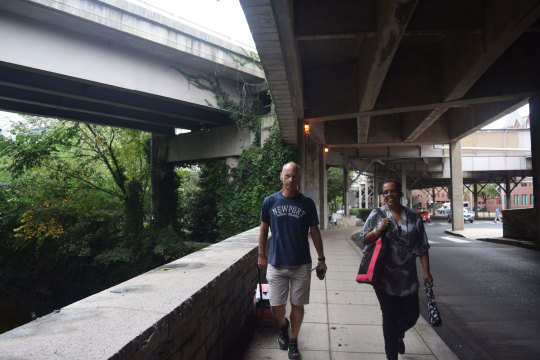
More than 3 million Americans — 1.1 percent of the U.S. population — have schizophrenia, according to the National Institute of Mental Health. But within the homeless population, between a fifth and a third are believed to suffer from schizophrenia.
Schizophrenia is just one of the disabling disorders of the brain that are overrepresented in the homeless population. Depression, bipolar disorder and personality disorders, as well as developmental disabilities like autism, severe learning disorders and intellectual impairments, are all present within the homeless population. Anything that impacts thinking, judging and perceiving too often leads to homelessness.
In all likelihood the influence of mental illness on homelessness is severely understated. Even the doctors I walked with on the streets of DC while I served as executive director of the Georgetown Ministry Center were not able to diagnose mental illness in many cases without repeated visits.
Anosognosia — a lack of awareness of one’s mental health condition — affects about half of all people with serious mental illness.
I cannot tell you how frustrating it is to watch, as I have, over the past 30 years, as people grow old and die on the street because we do not have the tools we need to intervene.
By Gunther Stern | Read the full article

Bowser, city ‘committed’ to meeting needs of LGBT homeless
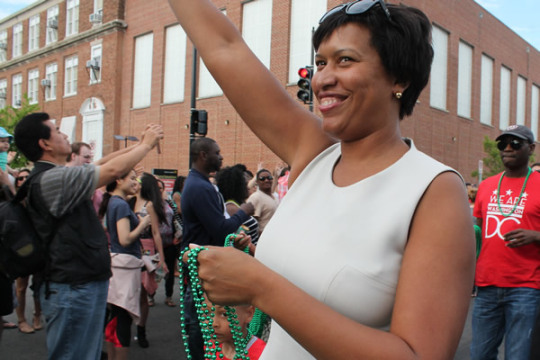
The D.C. Department of Human Services, which oversees the city’s homeless programs, has put in place policies and procedures to ensure that LGBT homeless people, both adults and youth, are treated with respect and receive the services they need, according to two department officials.
DHS spokesperson Dora Taylor said that since taking office in 2015, D.C. Mayor Muriel Bowser has made it known that aggressively addressing the city’s homeless problem, including specific issues pertaining to LGBT homeless people, are among her administration’s highest priority.
Taylor noted that among DHS’s actions since Bowser became mayor has been its implementation of the LGBTQ Homeless Youth Reform Amendment Act, which the D.C. Council passed unanimously in 2014. Council member Mary Cheh (D-Ward 3) and then-Council member Bowser (D-Ward 4) were the co-introducers of the legislation.
Taylor and DHS Senior Advisor Carter Hewgley said implementation of the law included a policy change adopted by DHS that requires all homeless shelters operated by the city or by city contractors to allow transgender people – youth or adults — seeking to enter a shelter to choose the one that is consistent with their gender identity.
By Lou Chibbaro Jr. | Read the full story

The Reluctant Undertakers
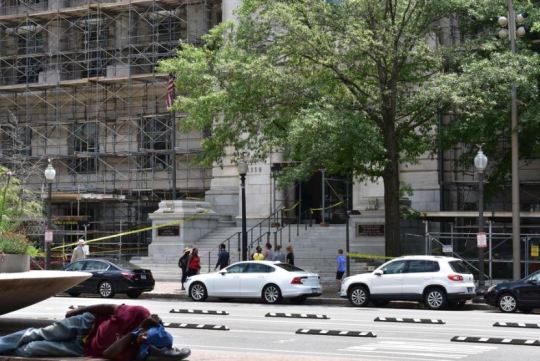
There is no formal tracking of nationwide mortality rates among the homeless, and advocates who work with homeless communities often struggle to get information when someone passes away.
“More often than not, we’ll hear through the grapevine that someone’s died,”
Reverend
Laing said. “It could take a while to put the pieces together, to find out if they had family or how to reach them.”
Once the pieces are put together, however, religious organizations and charities often step in to honor the lives of those who may have died without identification, or a readily identifiable next of kin. These same advocates, however, say cities need to do more to ensure that their residents have the dignity in death that they often weren’t provided in life.
“The person becomes a whole person again in death,” Laing said, “where, in life, they may have been just a number.”
By Molly McCluskey | Read the full story

How Some Shelter Rules Designed To Keep Domestic Violence Survivors Safe Can Harm Them
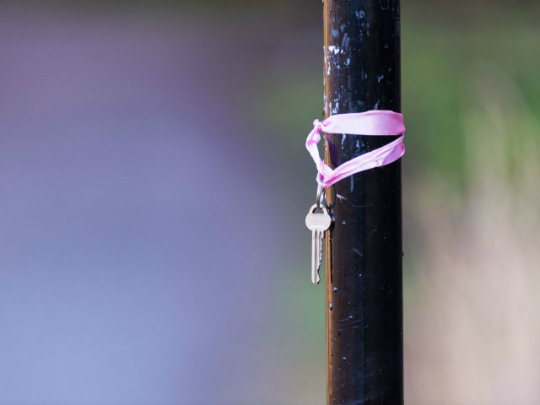
Domestic violence housing programs generally want to create safe environments for women leaving abusive relationships. As part of a growing understanding about the needs of survivors, many of these programs in D.C. are reevaluating the rules and restrictions they have in place to accomplish that.
“You’re still being told what you can and cannot do and what’s best for you,” says S., a survivor of domestic violence in her mid-40s. “You’ve been so dictated to for so long, depending how long you’re in your relationship. That model really doesn’t fit—you can’t thrive out of that situation.”
For the past year and a half, S., who asked that we not use her full name to protect her privacy, has lived in apartment-style housing provided by the District Alliance for Safe Housing after leaving her husband of 10 years. That set-up is ideal for S., who had been used to running a household. She thinks living in a communal-style shelter would have made for a much tougher transition.
By Rachel Kurzius | Read the full story

Alston House celebrates a decade in operation
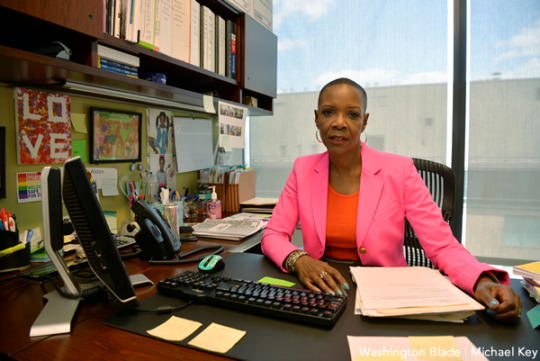
The first LGBT youth-focused shelter in D.C. is continuing its legacy of serving one of the most vulnerable demographics.
The Wanda Alston House and Foundation, now in its 10th year of service, serves LGBT individuals ages 16-24. The residential home-turned-shelter currently houses eight people, and hundreds have been through its doors over the last decade. The house is named after the late Wanda Alston, a D.C.-based LGBT activist who was murdered near her home in 2005.
Individuals enter the program based on their level of vulnerability and what kind of care the city’s homeless management providers think will best fit that person’s circumstances. The facility provides 24-hour support for residents through counseling, mental and medical health services. Tuition assistance and professional development is provided and other life skill services such as learning how to balance a checkbook, shop for groceries and manage a credit score are also offered. Residents receive three meals a day, clothing and toiletries as well as other necessities like Metro cards.
By Abby Wargo | Read the full story

Judge says D.C. government delays are causing serious harm to food-insecure residents
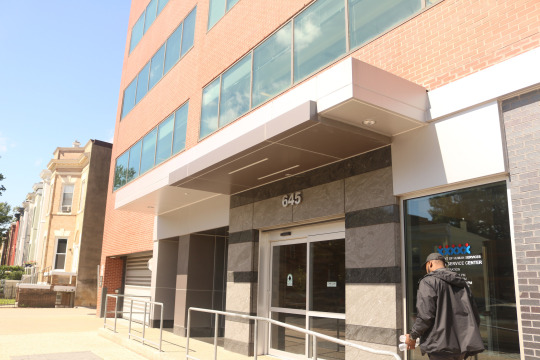
The H Street Service Center helps people seeking food assistance and Medicaid. Not even 30 minutes after the service center opened on a recent Wednesday morning, more than 100 people had filled nearly all the plastic blue chairs in the waiting room.
Advocates hope that a recent order from a federal judge means the experience at service centers like H Street soon won’t include worrying whether your benefits will be processed on time.
Last month Judge Christopher Cooper ruled the D.C. Department of Human Services must invest in resources to ensure that District residents who are food-insecure won’t have a long wait for food benefits…
By Meredith Roaten | Read the full story

QUEERY: Dominique ‘Domo’ Hardy
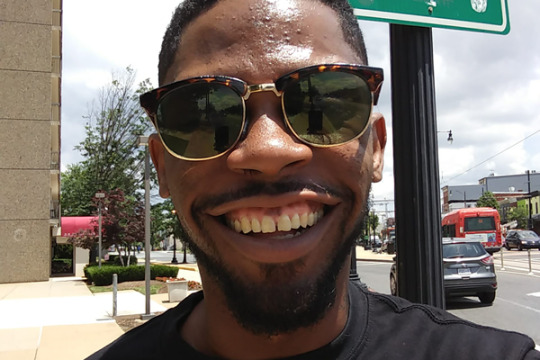
At age 17, Dominique “Domo” Hardy was homeless and “living from pillow to post.” Now, he’s an advocate and mentor for other LGBT youth experiencing homelessness and adversity.
The 30-year-old D.C. native recalls fighting every day to survive in the streets alongside other gay teens also rejected by their families. At the time, Hardy says there were few resources in place to help kids like him, so he was forced to grow up fast and fend for himself with little to no support from the city.
Here, he answers The Washington Blade’s 20-question Queery interview.
By Grace Perry | Read the full story

Council honors DC youth soccer team that represented U.S. at Street Child World Cup

The U.S. may not have made it to the World Cup this year, but nine DC high schoolers did. The students — all of whom have experienced or been at risk for homelessness — were honored by the DC Council last week for their participation in the 2018 Street Child World Cup in Russia.
The teens are all alums of DC SCORES, a group that creates neighborhood soccer teams that give kids in need the confidence and skills to succeed on the playing field, in the classroom, and in life, said Michael Holstein, DC SCORES’ director of marketing and communications.
Members of the all-female team that went to Russia range in age from 14 to 17. They were the first U.S. team ever to participate in the international competition, which has taken place twice before — in South Africa in 2010 and again in Brazil in 2014.
The group traveled to Moscow in May for the event, which sought to highlight the plight of homeless and economically disadvantaged children worldwide.
By Kate Oczypok | Read the full story

D.C. Central Kitchen will expand their services in response to youth crisis
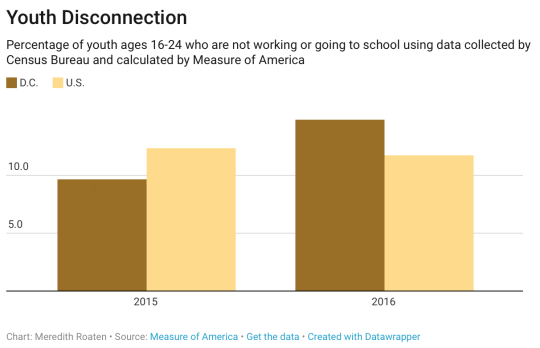
D.C. Central Kitchen is partnering with Building Bridges across the River at THEARC to bring new services to THEARC’s Ward 8 campus, including workforce development for youth age 18-25.
The nonprofit’s core training program has typically enrolled people aged 35-50, according to D.C. Central Kitchen’s chief development officer, Alexander Moore. Their most recent annual report cited an 87 percent success rate for placing trainees in a job in 2017. Moore said the expansion was considered when data revealed D.C.’s youth are increasingly at risk of being left out of the local economy.
More than 14.8 percent of D.C. youth are “disconnected,” from a job or school enrollment, which is above the national average, according to a 2018 “Measure of America” report. Thirty-eight states improved their rates of disconnection while Nebraska and D.C. were the only areas where the percentage increased during an 8-year time period. The District’s rate increased by more than 50 percent.
By Meredith Roaten | Read the full story

Gleaming Posters For New Development, Construction, Dust: What It’s Like To Live At D.C. General Right Now
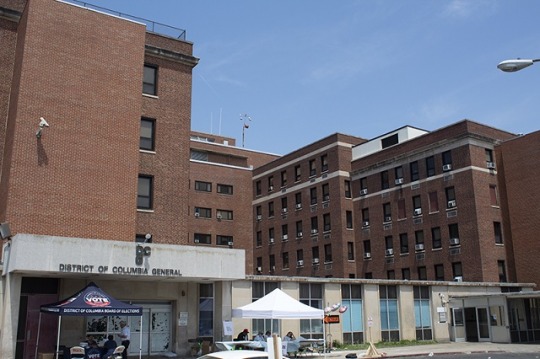
Like all residents of this place, she does not want to be here. The building is stuffy, she says, and she fears it’s making her child’s asthma worse. More than that, she fears he’s losing out on crucial resources. Giovanni is nonverbal and autistic, and the shelter doesn’t allow for home health aides to come in and provide him with needed services, she says. “We have paperwork from his school showing how you can see the change in his behavior from April [when we moved in] to now. He hit a kid at school,” she says.
But even though she doesn’t want to live here, Hunter says she is angry about feeling shoved out. She motions around her to the fencing closing in on the children’s playground, mounds of dirt piled where construction crews have started digging. She points in the distance to a building on campus that will be torn down soon, with residents of the shelter living right next door.
“I think it’s very disrespectful that they’re doing this [construction work] before everyone has moved out,” says Hunter.
BY Natalie Delgadillo | Read the full story

Casa Ruby offers short- and long-term housing
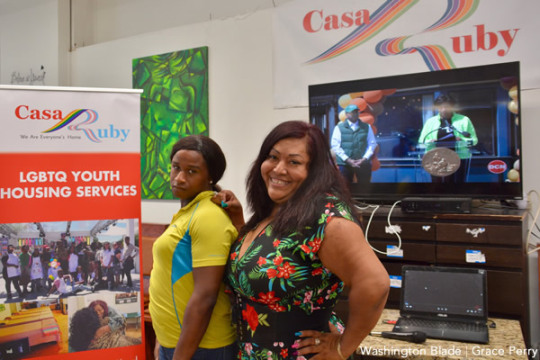
During the early 1990s, Ruby Corado spent most nights in public parks throughout D.C., trying to meet the basic needs of the homeless LGBT youth who had no safe space to go after 5 p.m. when the HIV clinics closed.
And so the movement began.
Now, 26 years later, Corado is the director of Casa Ruby, a local bilingual and multicultural organization founded in 2012 that provides housing and social services to LGBT individuals 24 hours a day.
The transgender El Salvador native says Casa Ruby started as an “emergency room.”
By Grace Perry | Read the full story

With Granola And Cookies, This Program Helps Women Get Back On Their Feet
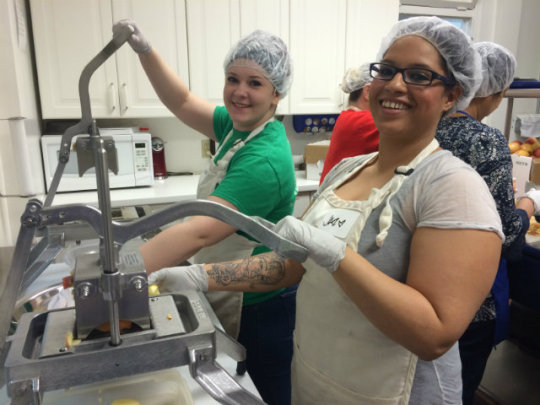
Several years ago, Patricia Hunt needed relief from her back pain. Her mother soon offered it—in the form of opioids.
Hunt, now 56, began taking them regularly, becoming so reliant on the drugs that family members urged her more than once to go to rehab. Yet hospital staff told Hunt’s sister that they couldn’t help her until she “hit rock-bottom.”
By 2015, Hunt sat behind bars in a federal prison for drug-related charges. There, the Woodbridge resident says she finally received the help she needed, getting sober and exploring the circumstances—including enduring “several different types of abuse”—that led to her self-destructive lifestyle. When she transitioned to a D.C. halfway house shortly after her 2016 release, she learned of a chance to start over with a job-readiness and empowerment program in Alexandria serving women who are formerly incarcerated or experiencing homelessness, Together We Bake. Within days, she was a student.
For Hunt and the roughly 130 women who have graduated from the program since it launched seven years ago, TWB has been a game-changer.
By
Eliza Berkon | Read the full story

Public Housing tenants will now have the opportunity to report monthly rent payments to credit agencies
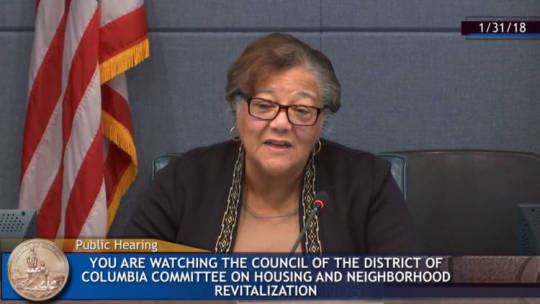
A pilot program that could help public housing tenants boost their credit scores was unanimously approved by D.C. Council earlier this month. However, with an unofficial start date and no funding until at least Spring 2019, it is difficult to determine how effective the bill will be.
Approximately 20,000 low-income families, seniors and people with disabilities rely on deeply-subsidized housing, with DCHA as their landlord, according to the agency’s website. The Public Housing Credit Building Pilot Program Act of 2017 requires that the D.C. Housing Authority (DCHA) create a program that gives residents who rely on the agency the option of having their monthly rent payments reported to credit bureaus.
Most renters’ on-time housing payments are not reflected in their credit reports and therefore do not increase or decrease a tenant’s credit score. In competitive rental markets such as the District, a high credit score can often make the difference between a rental application being accepted or rejected.
By Christian Zapata | Read the full story

Commentary: ‘Don’t just see the light, be the light’

We may assume that when formerly homeless and low-income residents finally secure housing, they’re fine. In fact, they are not fine. Too many people lack basic furniture and household goods.
Did you know the average expense for an American family to move and furnish their own home is over $7,000? These residents, often struggling with a traumatic experience (for example, a medical issue, a flooded house or the loss of a loved one), do not have the money or resources to afford this. Donated furniture may seem like a solution, but pickup from a furniture bank, usually located outside the city, is usually prohibitively expensive. Sadly, without a stable home, many revert to homelessness or suffer in poverty.
A little over a year ago, we began operations at Lighthouse DC to address this critical gap in affordable housing. Unlike any other service in the Washington metropolitan area, Lighthouse moves and furnishes for residents. It’s part of the larger “Housing First” approach that focuses on providing residents with stable housing first and then offering additional supportive services. We use an innovative, collaborative model in which we partner with local nonprofits, government, business and professionals to dramatically reduce the cost of housing-related services.
By Brian Hart | Read the full story

SMYAL’s 18-month shelter program houses LGBT youth
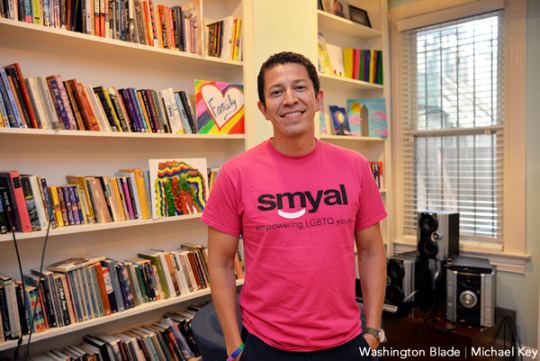
SMYAL’s transitional housing program opened in January 2017 in response to D.C.’s 2015 Homeless Youth Census, which states that 43 percent of homeless youth identify as LGBT.
The facility can accommodate 12 residents at a time for SMYAL’s 18-month program. Since its opening, 13 residents have been housed.
Residents are referred to the program through social workers, doctors, therapists, school personnel or through another agency. Once referred, potential residents come in for interviews and assessments. If the resident is accepted, they receive a welcome kit with toiletries, sheets and towels. Transportation is paid for and Safeway gift cards are distributed for residents to buy their own groceries and cook their own meals.
Director of Youth Housing Jorge Membreño, a program assistant, a case manager or another member of staff is on site anytime between 8 a.m.-6 p.m. The program offers case management for the development of a personal action plan and weekly check-in meetings. Supportive services are offered including medical care, mental health services and self-care support. Residents also learn skills pertaining to job hunting, apartment hunting, finding programs to get food stamps and more. There are also community outings and LGBT youth networking opportunities.
By Mariah Cooper | Read the full story

Inspired By Bitcoin, D.C. Economist Wants To Help Homeless Community Access Food With Dignity

Scott Borger spent a lot of time in the wake of the 2008 financial crisis lamenting the gradual defunding of nonprofits and local governments, and feeling sad about growing inequality in the D.C. area, where he’s now lived for a decade. Volunteering at Central Union Mission, a nonprofit based near Union Station that operates emergency shelters and other social programs, kept his eyes open to the challenges.
So he did what any economist with a Ph.D would do: He pondered theories of economics until he landed on one that served his goal.
The result is Breadcoin, a nonprofit organization that aims to empower the city’s community experiencing homeless. His tokens can be used to purchase food for people living on the street or for donating to churches and nonprofits.
Inspired by the advent of bitcoin and other cryptocurrency, Borger hopes Breadcoin will appreciate in value and help bridge gaps between the city’s wealthy and underprivileged classes.
By Mark Lieberman | Read the full story

Maxine Waters: “It’s going to be expensive to end homelessness. Let’s put a price on it.”
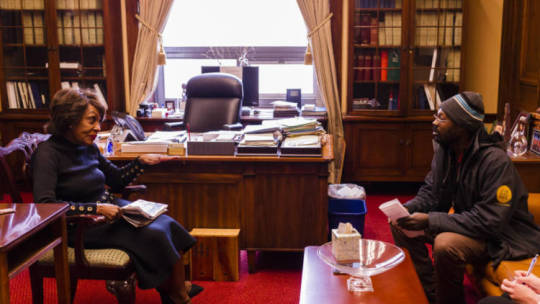
Congresswoman Maxine Waters has been an outspoken Democrat in Congress since she was elected in 1990. She has been re-elected consistently to represent California’s 29th Congressional District and is the longest-serving Black woman in the House of Representatives.
Waters has a well-earned reputation for unfaltering candidness. She has made headlines repeatedly for frank criticisms of President Trump, referring to him as a “crook” and a “liar,” and to his staff as the “Kremlin Klan.” Her outspoken opinions on the Trump administration have made her a viral sensation among folks on both sides of the aisle, who frequently refer to her as “Auntie Waters” on social media.
Throughout her political career, Waters has been a steadfast advocate for ending homelessness in the United States. Two years ago she introduced the pioneering Ending Homelessness Act of 2016. The bill would provide $13.27 billion in funding over five years for federal initiatives to help the thousands of Americans currently facing homelessness. She reintroduced the bill in 2017, but it was not passed.
Street Sense Media writer and vendor Reginald Black requested an interview with Waters because of that bill, her outspoken views and her position on the House Financial Services Committee.
By Reginald Black and Olivia Richter | Read the full story

Life Inside D.C.’s Motel Homeless Shelters
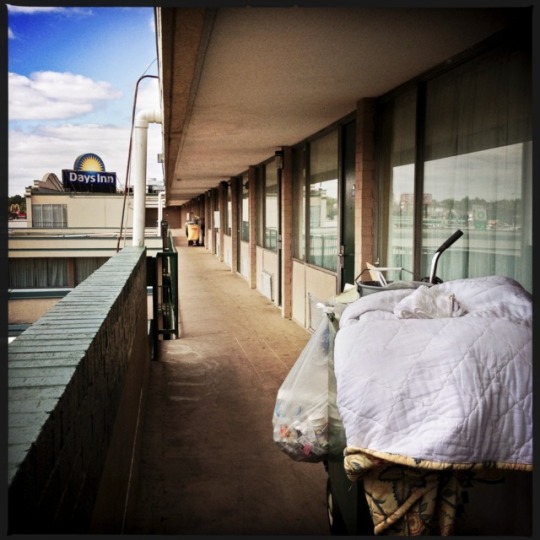
For a sense of what it’s like to live in a Days Inn, consider this: The group of chronically homeless D.C. residents sheltered there refer to it as “the compound.”
Their rooms are “cells,” a former resident named Victoria says, and The Community Partnership for the Prevention of Homelessness—a group D.C. pays about $75 million annually to manage the Days Inn and other homeless shelters—is “the warden.”
Children can’t eat, walk, or sleep alone, and they’re not allowed to play outside. (If they do, according to a notice the New York Avenue NE Days Inn has distributed since 2014, it’s grounds for eviction.) A monitor makes rounds every Wednesday for “room checks,” and each night at 9:30 p.m. for “curfew checks.” Parents have to sign out in a ledger at the front desk when they leave the motel, and sign in when they enter.
And though officials who run the Department of Human Services chronically refer to the motels as “temporary” and “emergency” shelters, families live there for months at a time. Many have lived in motels for years.
This service runs the District about $3,000 per family each month—comparable to the cost of a luxury two-bedroom apartment with a waterfront view. As of mid-April, 325 families lived in these five shelters, nearly double the 169 families currently living in D.C. General, the city’s largest family homeless shelter.
By Morgan Baskin | Read the full story

Commentary: On the border of homelessness
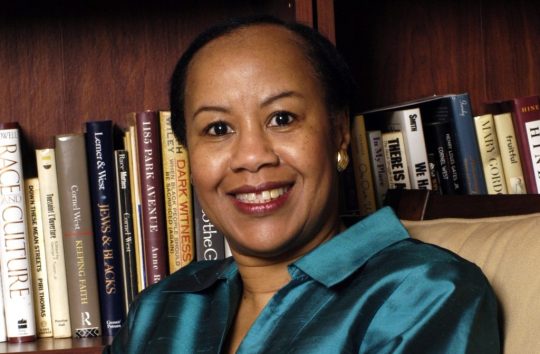
If she wasn’t juggling telephone bills, she was juggling rental payments. More than a few times she had sat on the smooth wooden benches inside the Landlord-Tenant Court of the DC Superior Court.
That woman was me. It has been decades, however, since I occupied that landscape. There is no need now for me to fear eviction. Still, every time I see someone else’s belongings on the sidewalk and see other people, like vultures, picking over the carcass of their dreams, I am traumatized anew by the thought it could happen to me.
The struggle against homelessness is not made easier when there are federal leaders intent on slashing the social safety net, on making the poor and working class pay for ill-conceived tax cuts.
By Jonetta Rose Barras | Read the full story

Miriam’s Kitchen Provides Physical Nourishment. Miriam’s Studio Provides A Creative Outlet
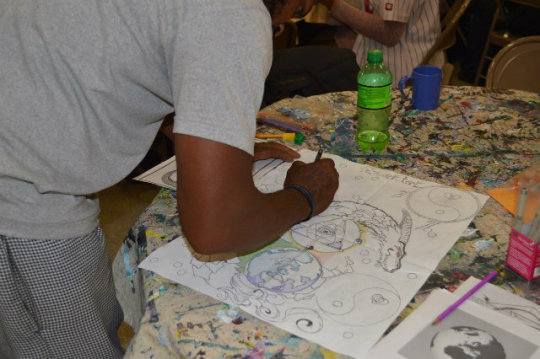
As part of Miriam’s Kitchen, which has been serving meals and providing care for people experiencing homelessness since 1983, Miriam’s Studio sprung from the idea that this community not only needed physical nourishment but emotional sustenance as well. In 2010, former Miriam’s executive director Catherine Crum began bringing art therapy interns from George Washington University to supervise its occasional art classes. The result is Miriam’s Studio, which now offers twice-daily therapy sessions that use a variety of art media (today they’re beading) to help guests work through emotional difficulties or trauma they might have experienced.
“Many programs around the city focus on the survival basics of what people need when they’re experiencing homelessness like food and housing and jobs, [which are] absolutely essential,” says senior art therapist Brittney Washington, who runs the studio. “At [Miriam’s] Studio, we accompany people through a process of feeling safer in this space and having some time—even if it’s just two hours at a time—to not have to think about ‘How am I going to survive?’ and instead focus on ‘How might I practice self-expression?’”
By Christina Smart | Read the full story




